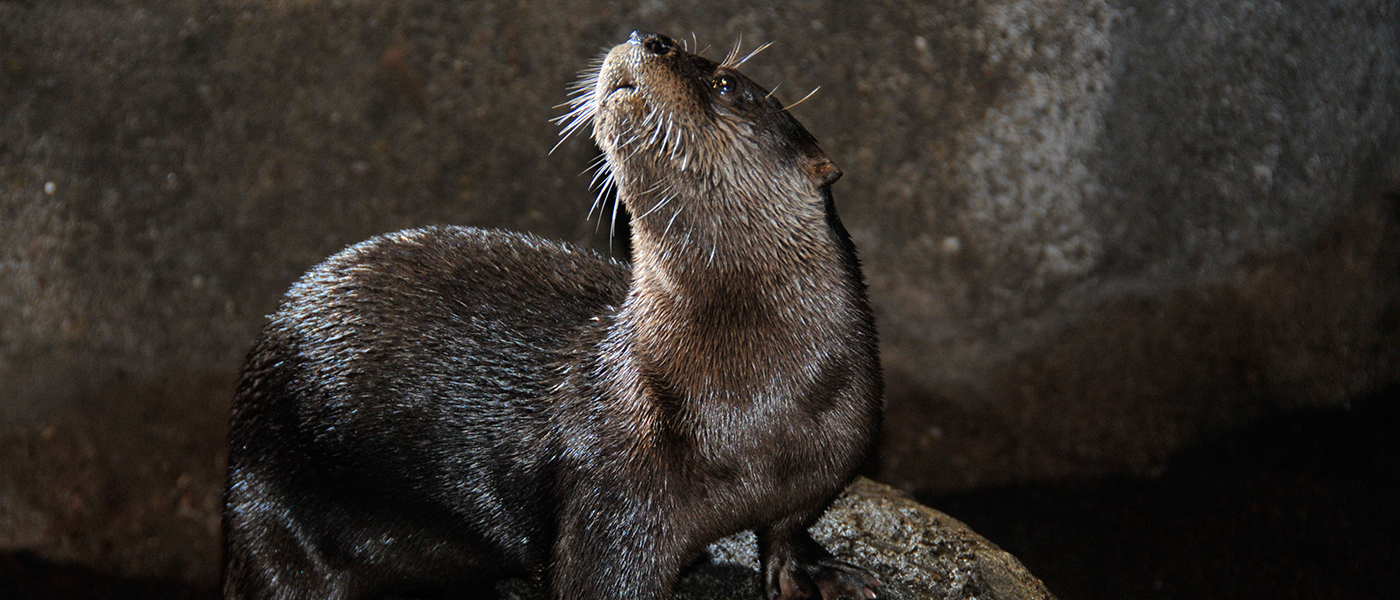
Have You Seen The Otters?
If you’ve ever visited The Wild Center in Tupper Lake, then I’m sure you have seen one of their star attractions: the otters.
Within the walls of The Wild Center, the playful river otters are found in their beautiful exhibit, also known as "Otter Falls," which consumes nearly the entire northwest corner of the museum. Once you are at the exhibit, it is easy to spend hours sitting on the bench next to the giant tank, listening to the falls as you watch the otters swim and play. But, have you ever really wondered what it is like to be an otter at The Wild Center? Are you curious as to what their typical day is like or what they are up to when The Center is closed?
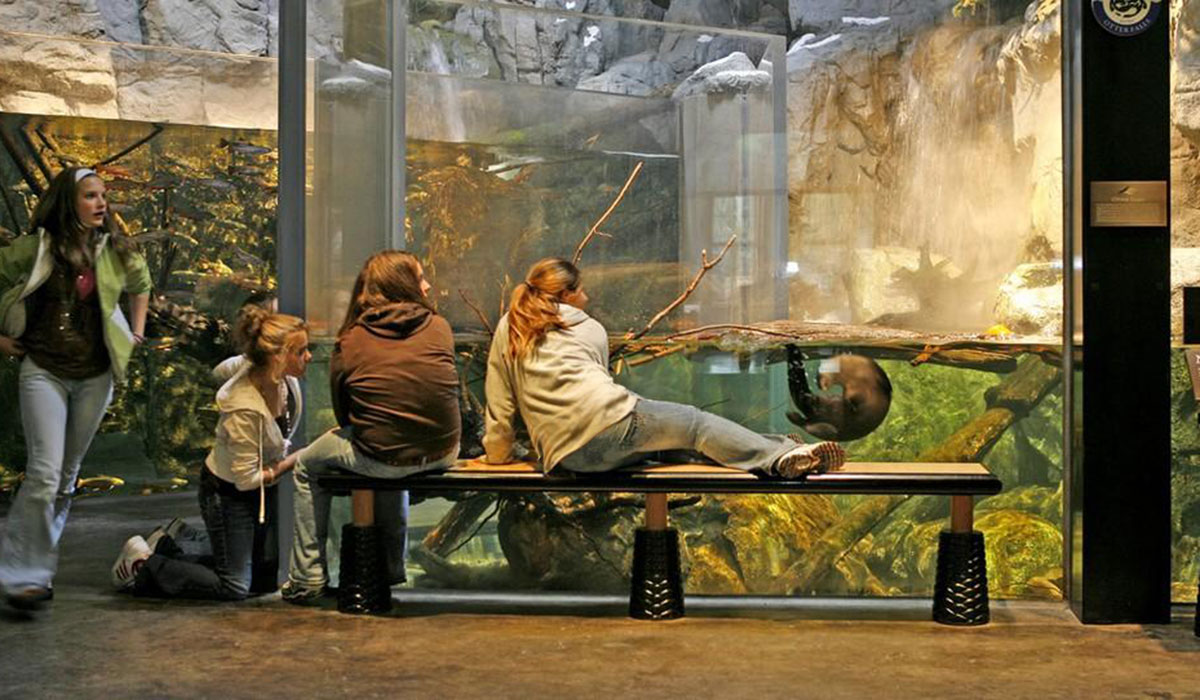
Recently I had to opportunity to meet with The Wild Center’s curator, Leah Valerio, to get answers to these questions and more. Leah was kind enough to meet with me on a Tuesday when The Center was closed - they are currently operating on their winter schedule which runs Friday through Sunday. When I arrived, the building looked quiet and peaceful, as the beginning of a good winter storm was settling in, so I took a quick detour to snap a couple of photos.
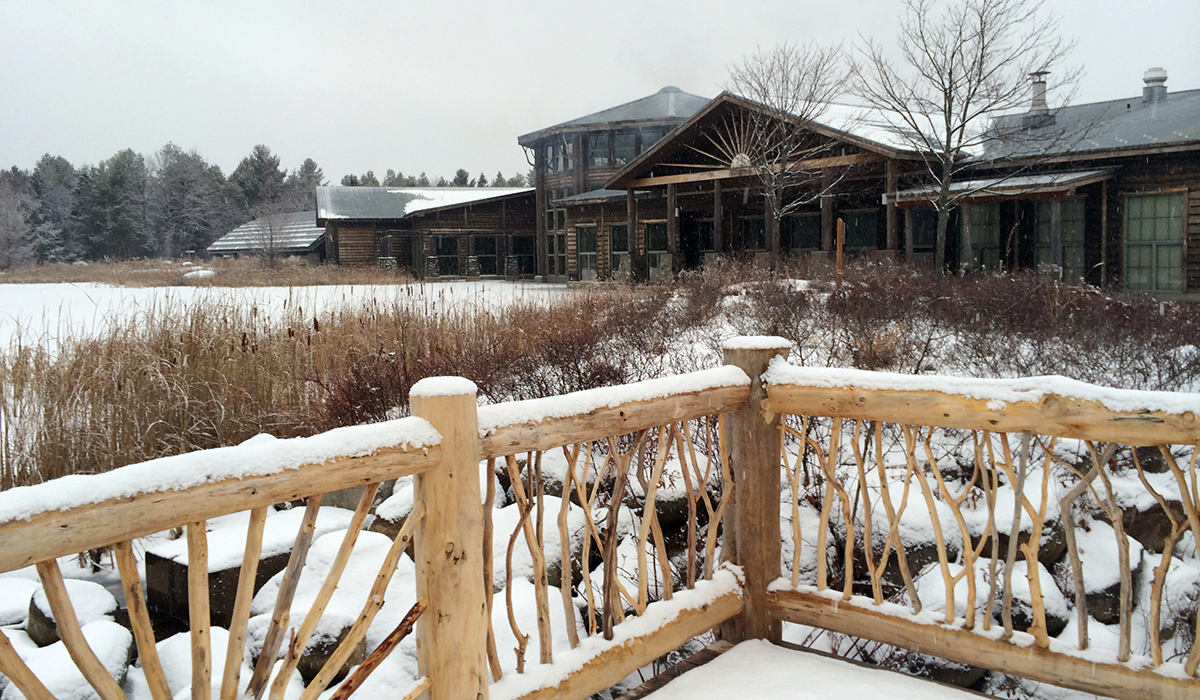
"Back of House" at The Wild Center
After taking a couple of photos, I went in to meet up with Leah and the otters. She first explained to me that the otters were not in the exhibit at the time, but were instead in their home "back of house," so that was our destination. When we made it behind the scenes, Leah gave me a quick tour of the facility where they prep meals and care for the Otters and the other animals that reside at The Wild Center. I learned that they also use this space to house animals that they use for different public programs, which allows them to not have to empty out an exhibit space to hold the programs throughout the museum. In addition, the space also serves as a quarantine for sick or injured animals and for housing different fish that are used as a food source for the otters and for populating The Center's large aquarium tanks.
Note: The public can also get a "back of house" tour of The Wild Center, information can be found on their website and at admissions.
Meal Time!
As we continued along to meet the otters, we stopped by the kitchen they use to prepare meals for all of animals who live at the museum. There we met their vet tech, Ruth, who took a moment with Leah to review the menu for the next two days.
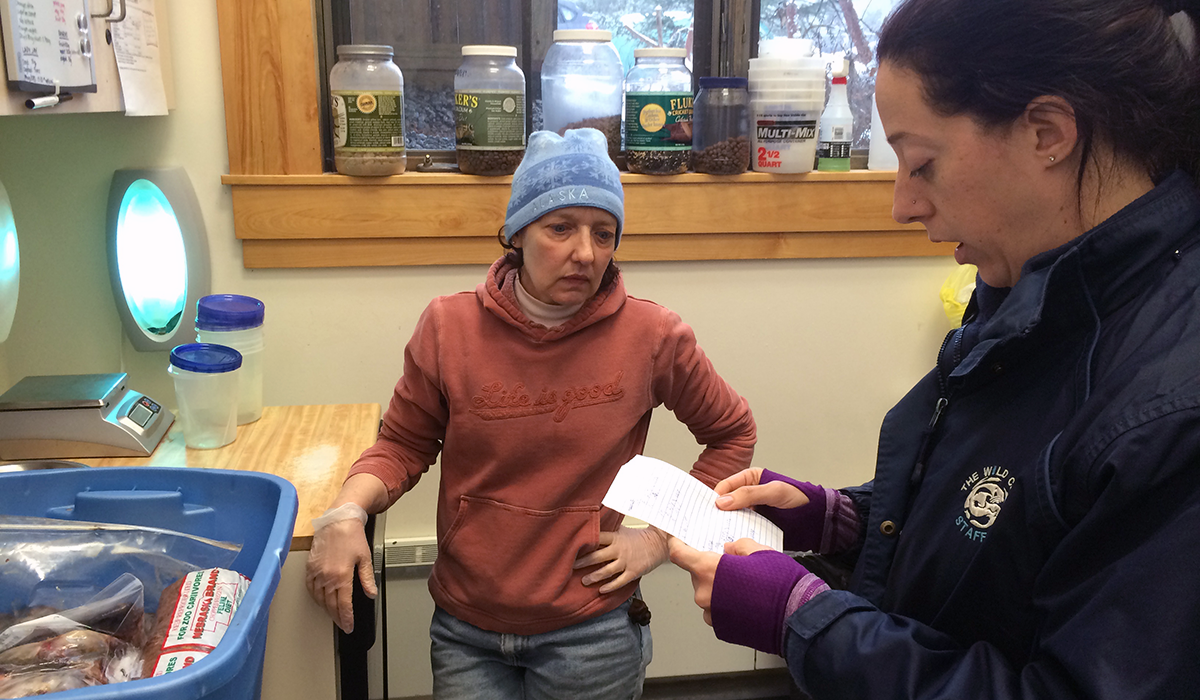
The Wild Center otters are fed 2 to 3 times a day, Leah explained. They receive a breakfast and dinner and then in between receive a snack which usually consists of live fish or fruits & vegetables. Their meal structure is typically 60 percent fish and 40 percent ground meat. The ground meat is a lean ground meat that is enriched with vitamins and minerals that are necessary for the animals to maintain a good health. Today, Leah and Ruth decided on a 5% reduction for their meal portions. Over their years they have learned that they need to reduce the otters diets slightly in the winter to help them maintain a healthy body weight.
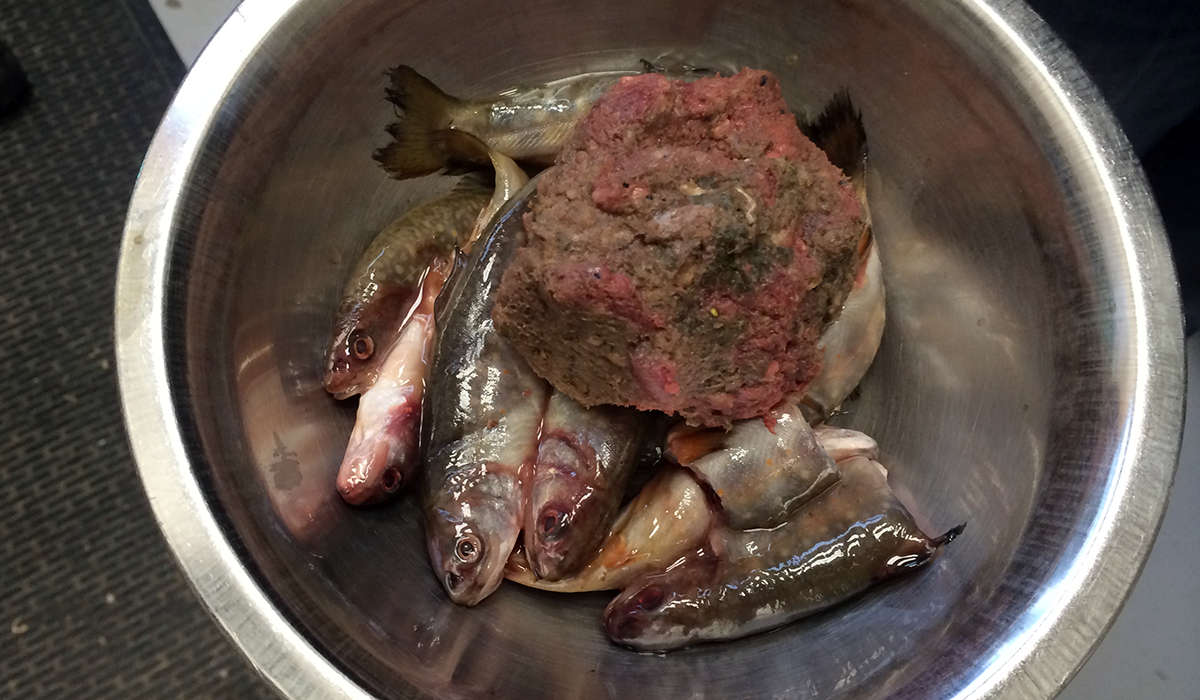
The Otters' Home
Once we left the kitchen, we passed a few offices, crossed over the tunnel the otters use to move from behind the scenes to their exhibit space within the museum, then entered into the otters' home. There, I official met the otters and Leah and I had the chance to talk about what their typical day is like.
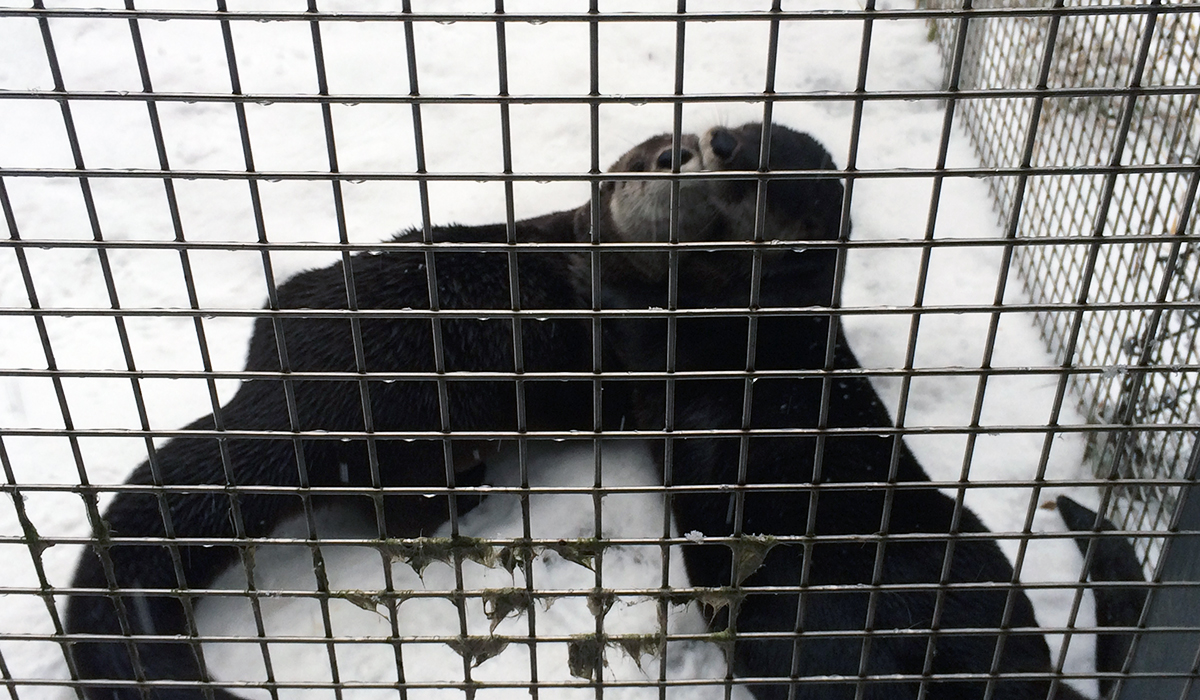
The Wild Center is the home of 4 otters: Louy and Remy (short for Remington) are the boys; Squeaker and Squirt are the girls. Both behind the scenes and within the exhibit, the otters always remain separated from the staff by some sort of barrier. However, even with the barrier, there was still plenty of interaction between us and them. Squeaker and Squirt immediately came over to greet us, while Louy and Remy were content to acknowledge us from the comfort of their home.
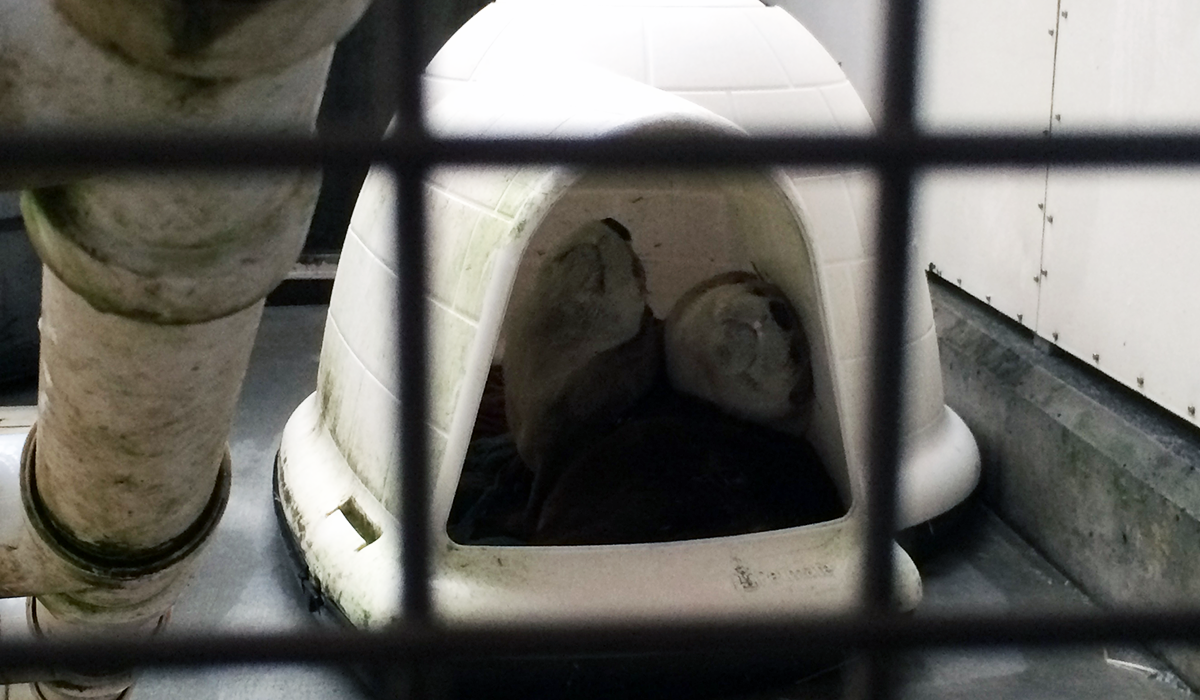
Morning
First thing in the morning, the otters begin their day with a visual health check. During the visual health check they are inspected to make sure they look good, make sure they haven't gotten sick or hurt overnight, and that their bowel movements look good. Once they all pass their morning screenings, breakfast is served. They will typically eat their breakfast in their own pens to ensure that each of the four otters eats the appropriate portion of food fixed for them.
Daytime
During the day the otters are let out of their individual pens, but the boys and the girls continue to remain in separate living quarters. Both sides of the living quarters have access to a large outdoor play area filled with trees, a variety of fun objects to climb on, a swimming area (in the summer), snow (in the winter) and lots of ground to play on. During my visit, Squeaker and Squirt were having fun rolling around in the snow.
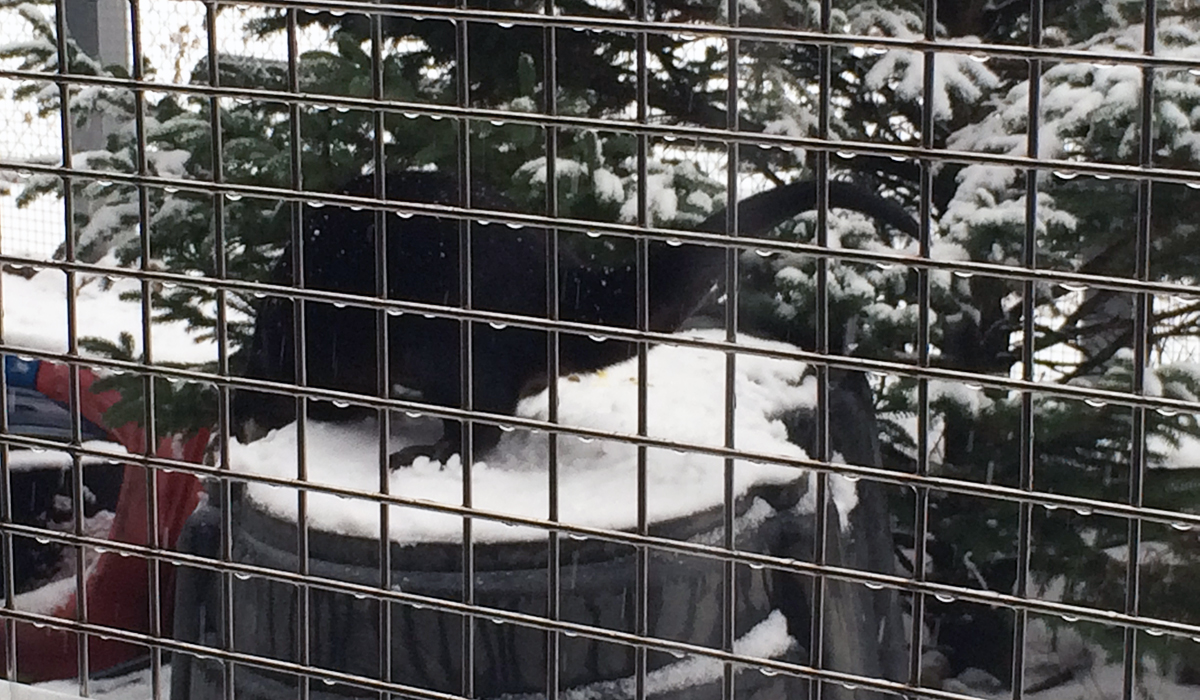
They rotate which of the two otters have access to the play area so that they get equal playtime. The otters that are not in the play area have plenty of room to move, play, and even swim in their own private swimming tub. However, even with room to spread out, it was interesting to see how close they remain to one another.
When The Center is open, two of the otters will be in the aquarium exhibit at one time. To get to the exhibit, they run through the tunnel that we crossed over on our way into their home. Leah explained that the tunnel is not the most interesting place for the otters. They are naturally curious animals, so they use a lot of different "enrichment items" to stimulate them to cross through the tunnel, such as food and toys. At the end of the day, they are excited for dinner and will run straight to their individual pens. I asked Leah if they prefer the exhibit or the play area more, and she explained that they really enjoy both. The exhibit has a much larger tank for them to swim in while the play area offers more ground space - the otters receive a good balance of time in both areas.
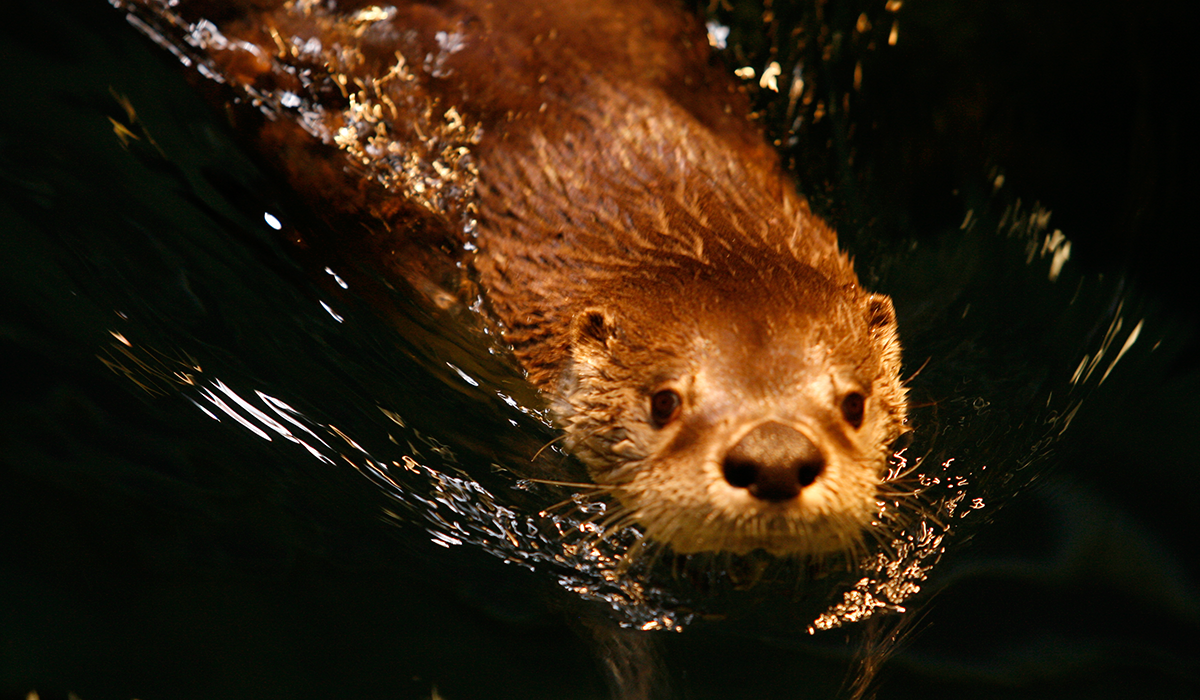
Evening
In the evening, the otters receive their second large meal of the day. At this time, they are again separated into their individual pens and remain separated throughout the night. This allows for them to stay safe during the night, it allows the staff monitor to know who is sick (if one of them becomes sick), and it ensures that each otter is consuming the correct amount of food.
More Cool Otter Info:
- According to Leah, the otters enjoy being in the water even when it is -30º F. "They have two kinds of fur, on the outside you see a stiffer guard hair and then underneath they have a soft dense under layer. They have something like 60,000 hairs per square centimeter and what that means is basically their fur is so thick their skin doesn't get wet. Then they trap pockets of air in that fur that helps insulate them."
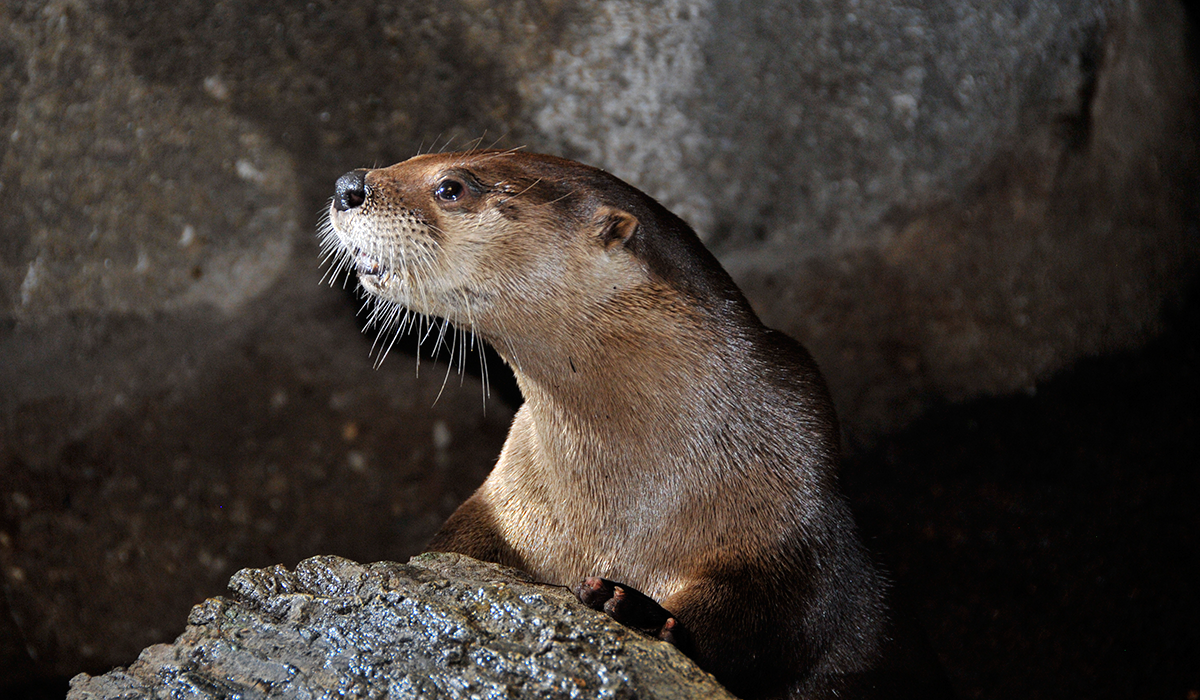
- Then I asked Leah if the otters notice people watching them when they are in the exhibit. Leah said, "Absolutely! They each have their own personalities, Squeaker and Remy are the hams of the group. All four of the otters have been around people almost their entire lives, so they are human imprint animals, which means they are used to being around people - and just by nature, river otters are very curious so this group likes the opportunity to interact with people."
- In the wild, otters traditionally live for about 12 years of age. In captivity they can live for 18 to 20 years. The Wild Center's older otters are 12 (Louie) & 13 (Squirt).
- In addition to Louie, Remy, Squeaker and Squirt, The Wild Center is actually home to one more otter, Ollie, The Wild Center's mascot. Ollie is often scene at different events at the Wild Center and throughout the Adirondack Park. In fact, he was even spotted once skiing at Big Tupper Ski Area (check out the video above).
Visit The Otters
Plan a visit to come and meet The Wild Center otters. During the winter, The Wild Center is open from 10am to 5pm on Friday through Sunday. From Memorial Day to Labor Day, The Center is open 7 days a week. While you are here, consider taking a "behind the scenes" tour and see where the otters and other animals spend their time when they are not in their exhibits.
Did you know? When you purchase your admission pass for The Wild Center, your second day's admission is included free. Yes, FREE! You can visit The Wild Center for two consecutive days in a row for the price of a single admission pass. Make a weekend of it - book a room, enjoy some time with the otters, visit the other exhibits at The Wild Center and then take advantage of the variety of other things to do in Tupper Lake.
